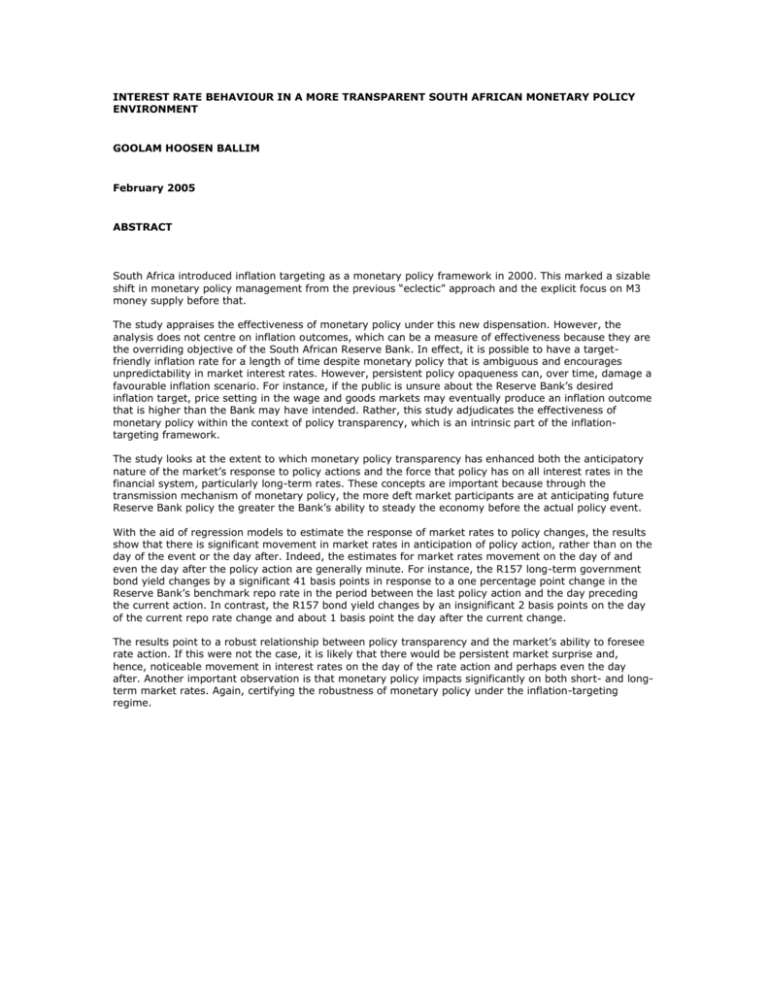INTEREST RATE BEHAVIOUR IN A MORE TRANSPARENT SOUTH
advertisement

INTEREST RATE BEHAVIOUR IN A MORE TRANSPARENT SOUTH AFRICAN MONETARY POLICY ENVIRONMENT GOOLAM HOOSEN BALLIM February 2005 ABSTRACT South Africa introduced inflation targeting as a monetary policy framework in 2000. This marked a sizable shift in monetary policy management from the previous “eclectic” approach and the explicit focus on M3 money supply before that. The study appraises the effectiveness of monetary policy under this new dispensation. However, the analysis does not centre on inflation outcomes, which can be a measure of effectiveness because they are the overriding objective of the South African Reserve Bank. In effect, it is possible to have a targetfriendly inflation rate for a length of time despite monetary policy that is ambiguous and encourages unpredictability in market interest rates. However, persistent policy opaqueness can, over time, damage a favourable inflation scenario. For instance, if the public is unsure about the Reserve Bank’s desired inflation target, price setting in the wage and goods markets may eventually produce an inflation outcome that is higher than the Bank may have intended. Rather, this study adjudicates the effectiveness of monetary policy within the context of policy transparency, which is an intrinsic part of the inflationtargeting framework. The study looks at the extent to which monetary policy transparency has enhanced both the anticipatory nature of the market’s response to policy actions and the force that policy has on all interest rates in the financial system, particularly long-term rates. These concepts are important because through the transmission mechanism of monetary policy, the more deft market participants are at anticipating future Reserve Bank policy the greater the Bank’s ability to steady the economy before the actual policy event. With the aid of regression models to estimate the response of market rates to policy changes, the results show that there is significant movement in market rates in anticipation of policy action, rather than on the day of the event or the day after. Indeed, the estimates for market rates movement on the day of and even the day after the policy action are generally minute. For instance, the R157 long-term government bond yield changes by a significant 41 basis points in response to a one percentage point change in the Reserve Bank’s benchmark repo rate in the period between the last policy action and the day preceding the current action. In contrast, the R157 bond yield changes by an insignificant 2 basis points on the day of the current repo rate change and about 1 basis point the day after the current change. The results point to a robust relationship between policy transparency and the market’s ability to foresee rate action. If this were not the case, it is likely that there would be persistent market surprise and, hence, noticeable movement in interest rates on the day of the rate action and perhaps even the day after. Another important observation is that monetary policy impacts significantly on both short- and longterm market rates. Again, certifying the robustness of monetary policy under the inflation-targeting regime.











